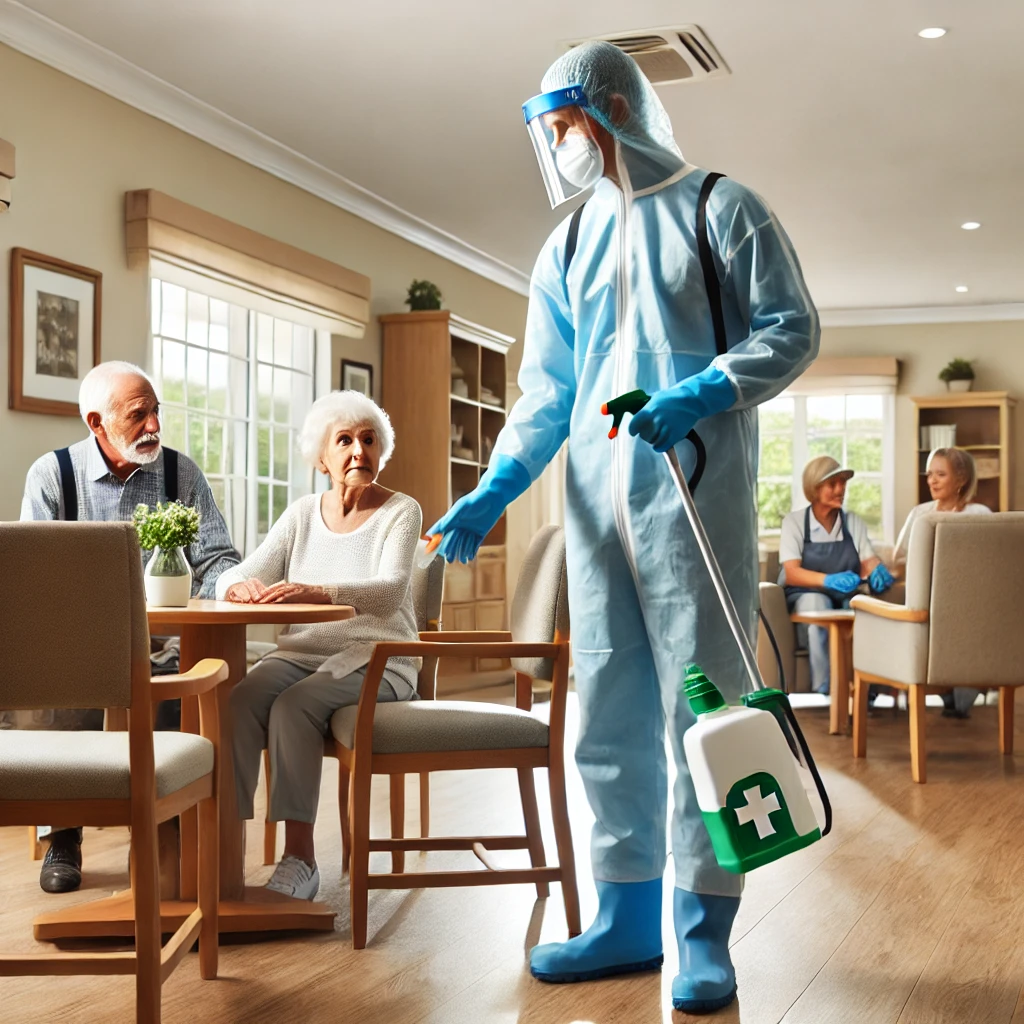Cleaning in aged care facilities demands a high standard to protect residents’ health and maintain a safe, welcoming environment. Since elderly residents often have weaker immune systems, meticulous cleaning and disinfection routines are essential to prevent the spread of infections. Here’s a breakdown of effective strategies for maintaining cleanliness and hygiene in aged care settings.
1. Implementing Regular Deep Cleaning
Regular deep cleaning schedules are crucial for aged care facilities. This includes thorough cleaning of resident rooms, bathrooms, and common areas. Aged care facilities should focus on sanitising high-contact surfaces, such as:
- Light switches
- Door handles
- Bed rails
- Shared equipment like walkers and wheelchairs
Deep cleaning reduces the buildup of germs and other contaminants, creating a healthier living space for residents and staff alike.
2. Adopting Infection Control Protocols
Given the high risk of infections in aged care facilities, robust infection control protocols are essential. This involves using hospital-grade disinfectants that effectively eliminate pathogens, especially in areas where infections are more likely to spread, such as bathrooms and dining areas. Cleaning staff should be trained in infection control procedures, including:
- Proper hand hygiene before and after cleaning
- Using disposable gloves and other PPE
- Following protocols to avoid cross-contamination
3. Using Colour-Coded Cleaning Systems
Colour-coded cleaning systems reduce the risk of cross-contamination by assigning specific colours for different areas. For instance:
- Red: Toilets and urinals
- Yellow: Bathrooms and showers
- Green: Kitchen and food preparation areas
- Blue: General areas like bedrooms and offices
This simple system prevents the accidental transfer of germs from one area to another, promoting a safer environment for vulnerable residents.
4. Routine Air Quality Management
Poor indoor air quality can aggravate respiratory conditions, which are common among elderly residents. Aged care facilities should include air quality management as part of their cleaning strategy by:
- Regularly changing and cleaning air filters
- Using air purifiers in common areas
- Ensuring adequate ventilation to minimise airborne pathogens
Regular air quality assessments help maintain a comfortable and safe environment, especially for residents with respiratory sensitivities.
5. Effective Waste Management
Proper waste management is essential to prevent the spread of infections. Facilities should have a dedicated waste disposal area that is cleaned and disinfected regularly. Waste should be categorised and disposed of in clearly labelled bins, such as:
- General waste
- Medical waste (for items like used PPE and syringes)
- Recyclables (where applicable)
Staff should be trained in waste handling to minimise risks and maintain cleanliness throughout the facility.
6. Encouraging Hand Hygiene
Frequent hand hygiene is a simple yet effective way to prevent infections. Place hand sanitising stations throughout the facility, especially in high-traffic areas. Staff and residents should be encouraged to use these regularly to lower the risk of infections spreading.
7. Routine Audits and Staff Training
Regular audits and staff training ensure that cleaning standards are consistently met. Audits help identify areas for improvement, while training keeps staff updated on the latest cleaning practices and products. Ongoing education in areas like the proper use of disinfectants and the importance of PPE is essential in keeping everyone safe.
By applying these cleaning strategies, aged care facilities can create a safer and more comfortable environment for their residents.

